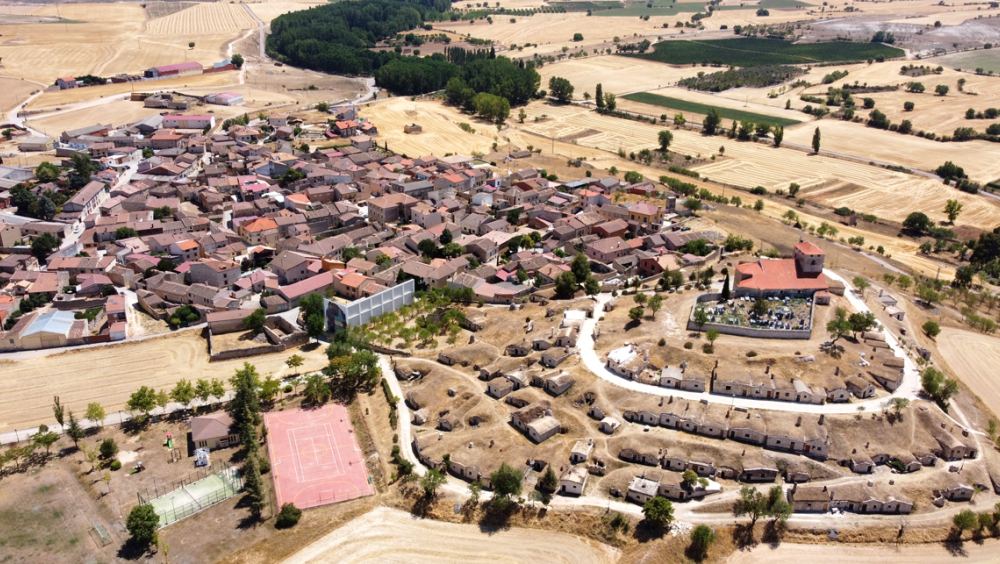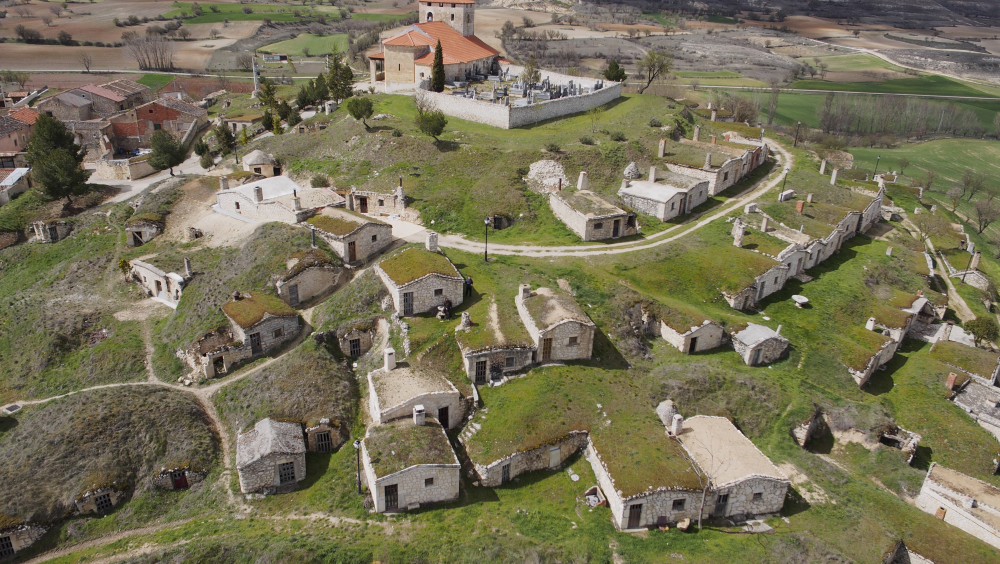Hobbit Village "El Cotarro" in Moradillo de Roa
The ethnographic heritage of the Ribera del Duero has a lot of history and identity.
In the Ribera del Duero we have been making wine for more than 2,500 years, a legacy that gives us a deep respect for the terroir, that exceptional combination of an extreme and changing climate with a diverse and complex geology.
Moradillo de Roa is located in the south of the Ribera del Duero (Burgos), on a hill with wide views of an open horizon dominated by fields of cereals and vineyards. Like all the villages along the Duero it was populated in the late 11th century. But, there is evidence of an Iron Age settlement in the “Los Ceniceros” area, where the Hermitage in honor of the Virgin of Egido is located, which contains rich polychrome coffered ceilings in the Mudejar style.
Moradillo de Roa sits on a small hill or mound and it is this location that gives this village its unique character, as it is precisely the privileged location of the defensive hill with its high views where the tower stands in association with a late Gothic church that was added later. And the ensemble is completed with the particular use of the “cotarro” itself to build a whole complex of well harmonised wine cellars and wine presses.
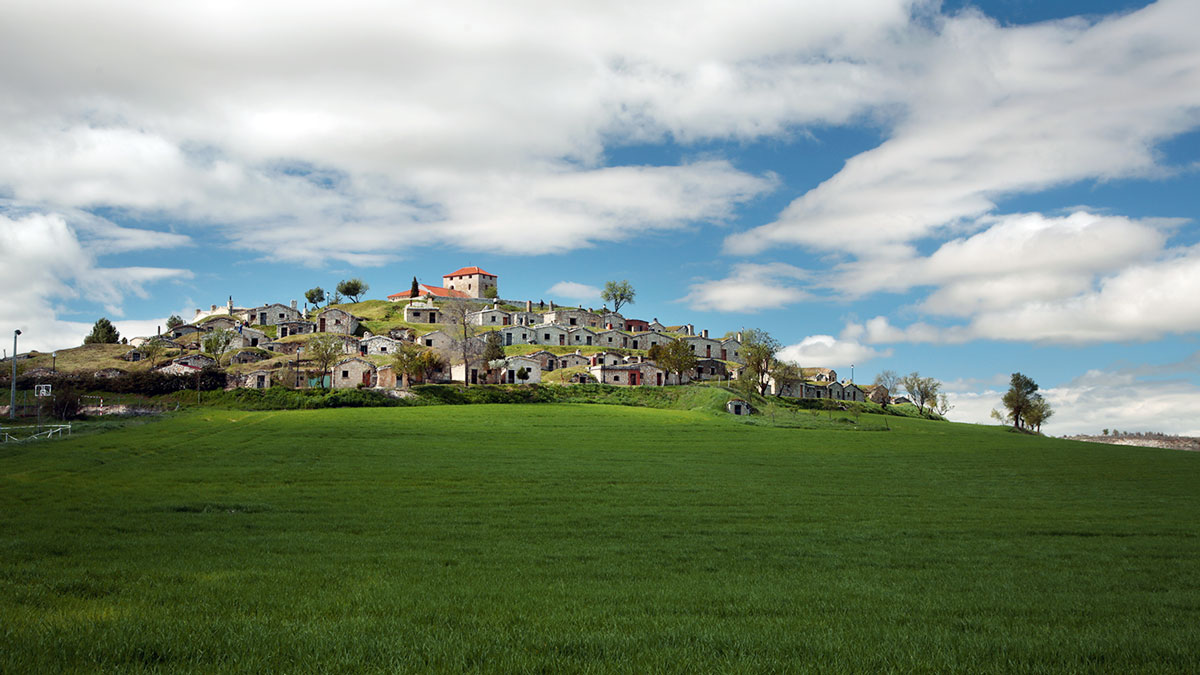
Here it’s not just the wine that is noteworthy, but also the houses, whose domed roofs perched atop a hill give it the appearance of a Hobbit village taken straight out of Tolkien’s Middle Earth.
The long tradition of vine cultivation in the Ribera del Duero abounded in the very dense and varied civil and service architecture of the region with multiple manifestations of constructions; different schools and polymorphic patterns of cellars, wine presses, "lagaretas", long cellars with their unloading docks, zarceras (vents), porters, etc., which are functionally adapted to the main purpose of the production and preservation of the wines.
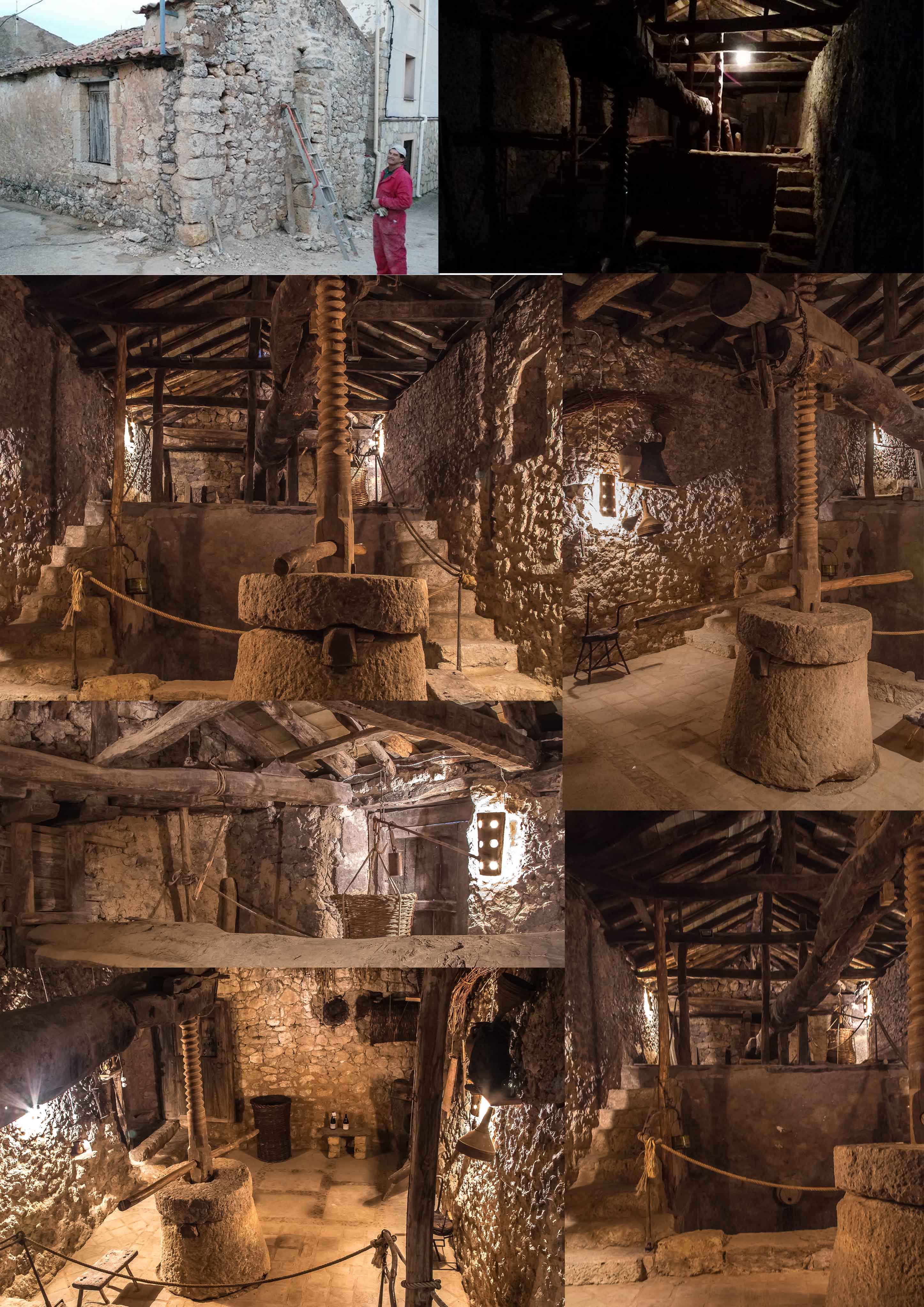
We are especially proud of the Europa Nostra European Heritage Award for Conservation 2020. The jury concluded that “this project is an excellent example of a response to rural decline, a problem that is present throughout Europe.The town of Moradillo de Roa has managed to encompass a Wine Tourism Project in the landscape throughout its territory, highlighting its history, attracting thousands of tourists.”
Moradillo de Roa is located in the Ribera del Duero (Burgos) Spain. It preserves an admirable homogeneous group called “El Cotarro” with more than 150 subterranean caves, all carved in stone, equal of measures and aligned in horizontal and descending streets that occupy all the sites of the hill of the Church of San Pedro. We would like to point out that, this project has not received state or regional economic support, "El Cotarro" area has been recuperated only thanks to neighborhood support and volunteers. At the same time, a volunteer has studied the municipal archive to recover the history of the wineries, whose first written reference dates back to 1550. There are also written records referencing a winepress in 1736 and barrels dating back to 1820. This ambitious project has already received several awards in Spain.
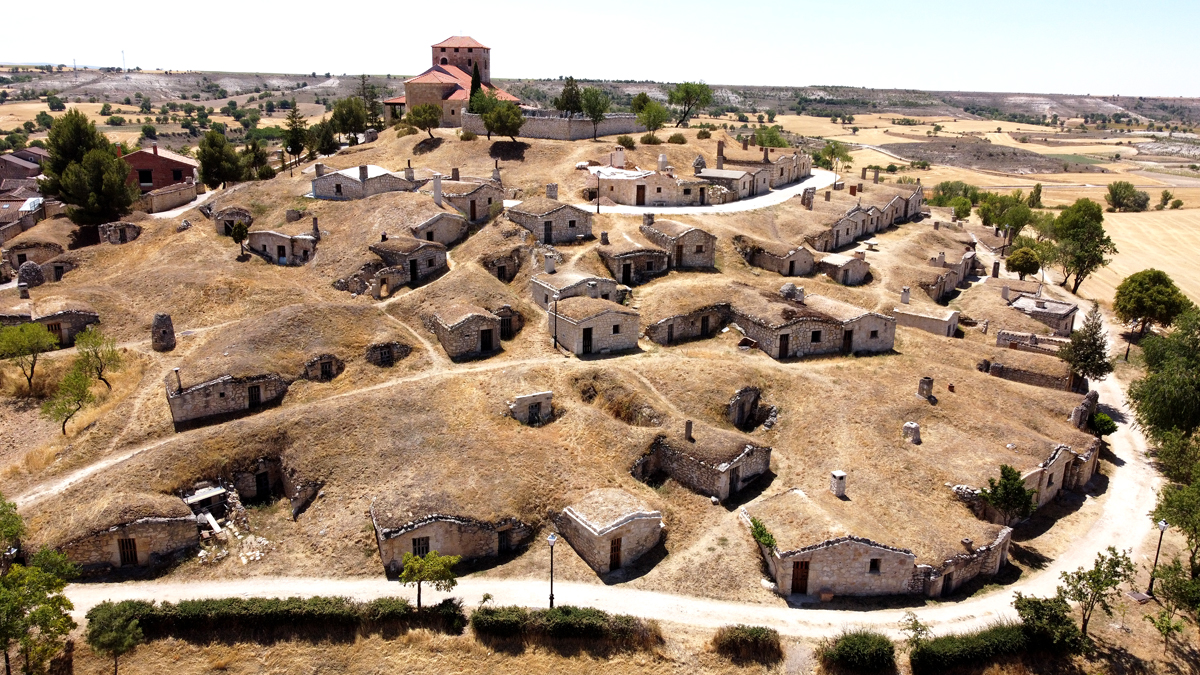 “El Cotarro” means (in old Spanish) high area or hill.
“El Cotarro” means (in old Spanish) high area or hill.
We insist on its uniqueness, as there are many examples of ethnographically significant cellar complexes, but few are found clustered around the conical face of a regular cotarro around its entire perimeter and, above all, with the aforementioned church-tower and the cemetery crowning it and forming a complex of substantial beauty.
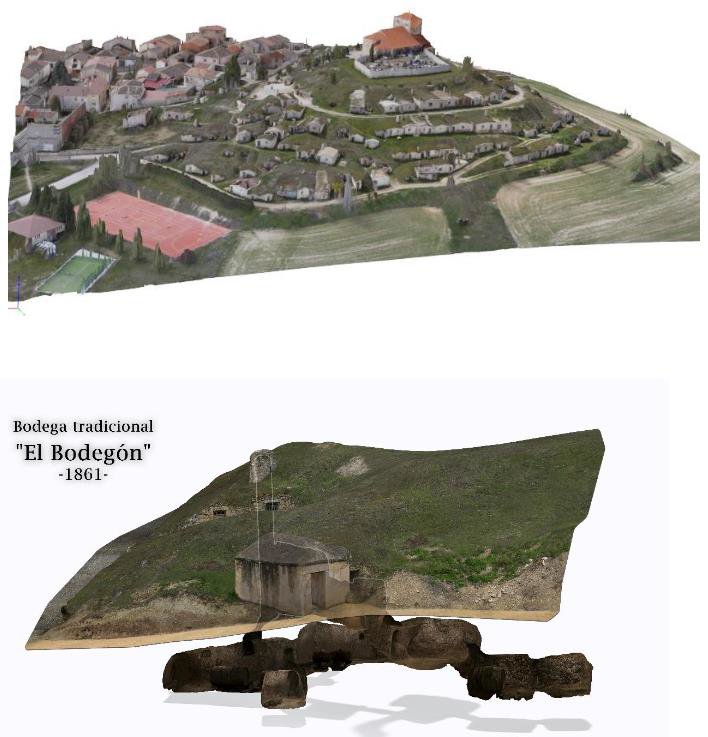
There are 163 neighbors in Moradillo de Roa, approximately the same number of subterranean caves Our philosophy is: “rebuild to live” and, therefore, we strive every day to return the lost splendor to a legacy that dates back to the 15th century.
Moradillo de Roa has been linked to wine culture for centuries. This village has a historical & cultural heritage that is included in the Project of Awareness, Protection, Maintenance, Recovery and Enhancement of the subterranean caves and traditional wine presses of Moradillo de Roa “El Cotarro”. The caves and wineries of Moradillo de Roa had serious problems of water leaks and subsidence that endangered this historical heritage. For this reason, it arises the need for rehabilitate and conservate of the wine heritage linked to past and present generations.
As for protection, attempts have been made to legislate to maintain traditional architecture. Since the 80s, there is an unwritten rule that forced neighbors, who wanted to build or repair their cellar, to follow a common aesthetic and the use of traditional materials, such as stone and wood. Note that this project has not received state or regional economic support, has been solely developed thanks to neighborhood support and volunteers who have performed maintenance and cleaning work in the hill of the wineries are located and rehabilitation tasks.
Thus, through the Commission for Maintenance and Conservation created for this purpose, different measures and actions have been carried out, thanks to which you can enjoy this underground treasure through guide visits. We intend to raise awareness about the heritage, historical, cultural and social value of our Cotarro de Bodegas and show a hidden world under our feet.
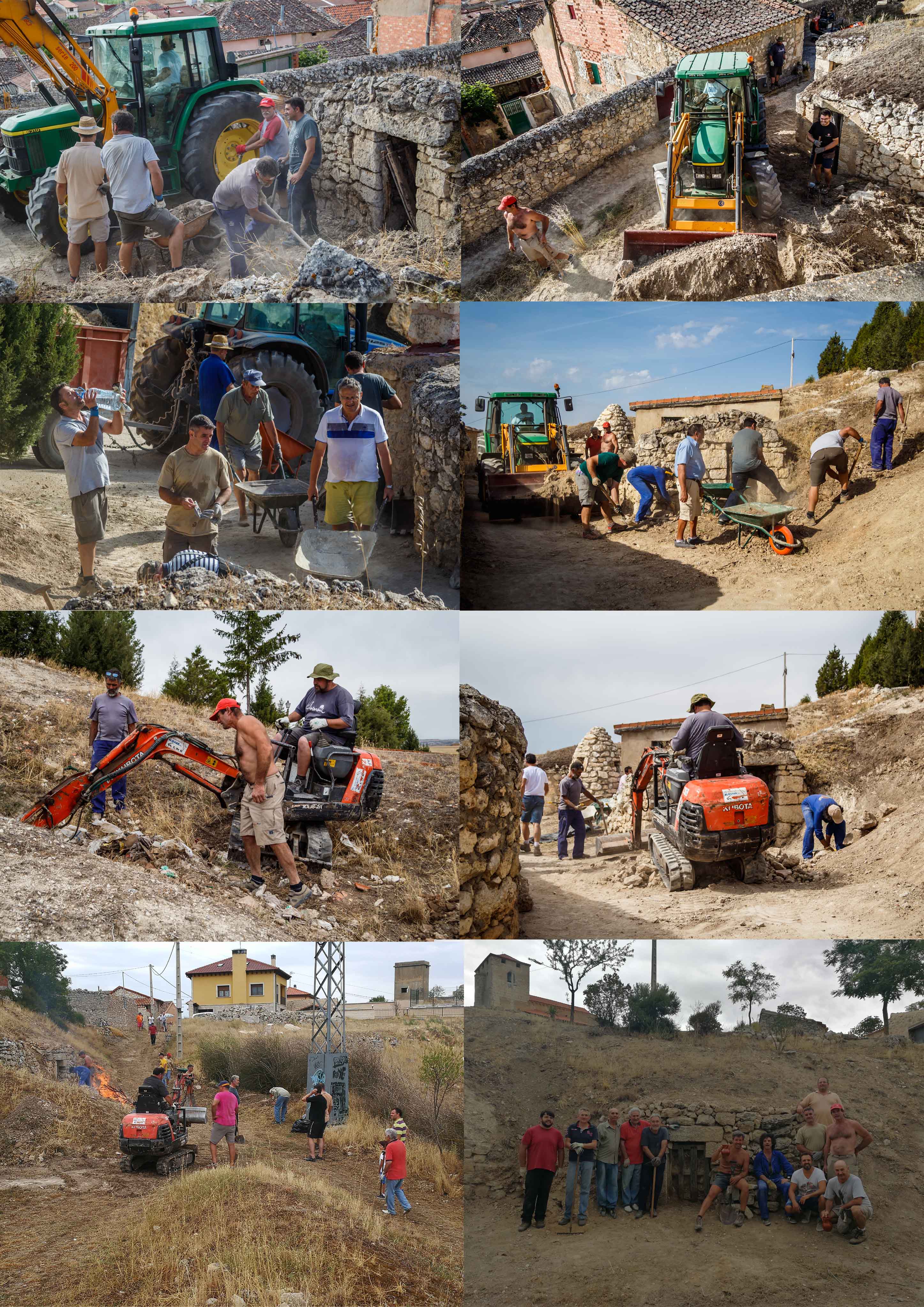
Some years ago, we decided to start up an awareness, protection, maintenance, recovery and valorisation Project of the traditional caves and wineries of Moradillo de Roa of 300 years old. The first task was the most important, raising awareness of the need to maintain and recover this cultural heritage. On March 27, 2016, the project is presented to the neighboors through a documentary and the approval of a regulatory ordinance, which will indicate the rights and duties of the winery owners, is voted.
First of all, we did a cartography and planimetry study of the “El Cotarro” area, where the subterranean caves and traditional wineries are located. The company "Cartodesia" of Madrid that made this work, financed us 60% of the cost of their work, paying only the remaining 40% to help us continue with the project. With these data, they made a study to know where the rainwater circulates and where it accumulates and filters, causing problems of deterioration and landslides to solve these problems.

The "El Cotarro" area is owned by the Town Council, the owners of the caves have a lease on use them. This made possible the approval of the regulatory framework regularization for the cellars by the Town Council. In this way, each owner is obliged to maintain his/her cellar and entrance in good condition, losing ownership if he don't follow the regulations. The Town Council forfeits any fees related to rehabilitation work on the cellars and is responsible for the maintenance of the area around of “El Cotarro”, The hill in which the underground cellars are located resembles a termite mound, if the cellar above sinks so do the bottom cellars. Therefore, sanitation and ventilation of the cellars is vital to avoid collapse. Nacho Rincon, councilor of Culture, in charge of joking dubbed "Concejal de Bodegas" (councilor of wineries) is the person who firts raised the potential of promoting the wine driven tourism industry in Moradillo de Roa, with the support of the Mayor, Francisco Javier Arroyo Rincon.
A project that highlights its history, which makes a town strive to preserve an authentic Ethnological Ensemble of the Ribera del Duero. In December 2015, the Moradillo de Roa Town Hall decided to recover and maintain this valuable heritage, launching an ambitious project that is currently consolidated. In order to finance this recovery project, the Town Hall :
• Elaborate “El Cotarro” wine in a traditional winepress from 1736 (El Tercio).
• Elaborate “El Cotarro” vintage beer with local barley and grapes.

• Wine tourism through guided tours of this ethnological complex: “here people can learn the journey of the grape from the treading and pressing in the traditional Tío Santos winepress (1744), to its climb to “El Cotarro” of wineries and its guard in the underground winery El Bodegón (1861)“. Tourists can travel 300 years into the past, entering the bowels of the earth, just like our ancestors did.


Moradillo de Roa received the 2020 European heritage award thanks to the recovery of the "El Cotarro" neighbourhood, one of the top areas for wineries in all of Spain. Here it’s not just the wine that is noteworthy, but also the houses, whose domed roofs perched atop a hill give it the appearance of a Hobbit village taken straight out of Tolkien’s Middle Earth.
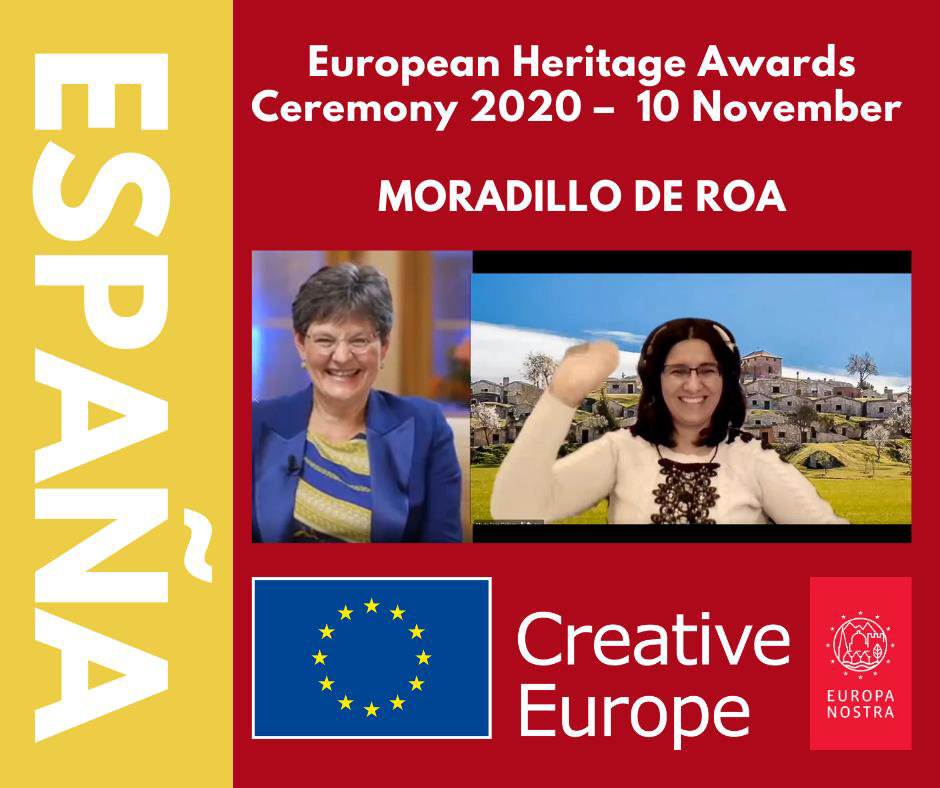
The recovery of the neighborhood of traditional wineries and winepresses “El Cotarro” and its enhancement as a wine tourism destination won the Europa Nostra 2020 European Heritage Conservation Award. The initiative of Bodegas Moradillo de Roa stood out along with 21 other candidates out of 15 countries, selected by an independent jury made up of heritage experts from all over Europe. At the same time, it should be noted that Hispania Nostra later awarded our proposal on intervention in the territory or landscape with a second prize. These awards refer to good practices in the field of conservation of cultural and natural heritage. The Jury wanted to recognize the interest in the protection and enhancement of heritage in a single project that pays special attention to historical, environmental, social and business aspects.
The jury considered that this project is an excellent example of a response to rural decline, a problem present throughout Europe, and valued the importance of neighborhood collaboration in its execution and enhancement of a wine tourism project that is integrated into its landscape, history and territory. Also, he highlighted the recovery of traditions, culture, landscape as well as the wineries and its objective of turning it into a wine tourism resource, with the consequent benefit for local society and economy.
At Moradillo de Roa we have shown that the rural economy can be improved and even generate employment, with cultural or leisure initiatives. Wine tourism linked to cultural events in our town is an opportunity for quality tourism. These activities attract quality tourism to our Historic Winery District “El Cotarro” (15th century) which is transformed into spending in the area, whether in overnight stays, food or local and artisan products.
The media impact for a town of 161 inhabitants, where its City Council does not charge anything and where there was no budgeted item for the Moradillo de Roa winery neighborhood project and even less for dissemination and advertising, has been brutal. The awards obtained and the cultural activity that we generate through the “El Cotarro” project help us to value our heritage, traditions and culture.
Underground wine cellar tour "El Cotarro" in Moradillo de Roa (Ribera del Duero) Spain
https://bodegasdemoradillo.com/
Agustina González Alonso (Tourism Manager) +34 625 635 291
Ayuntamiento de Moradillo de Roa (Burgos) Spain
moradilloderoa@diputaciondeburgos.net
cultura.ayto.moradilloderoa@gmail.com
https://storage.net-fs.com/hosting/3915766/1/index.htm
www.facebook.com/BarrioBodegasElCotarro
Twitter: @bodegasMoradill
Instagram: moradillo_de_roa
